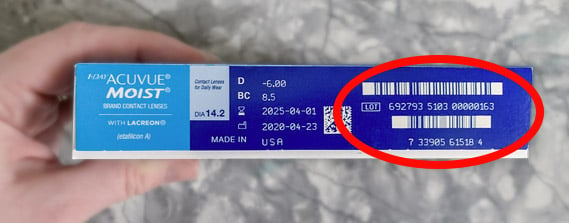Is it Safe to Sleep in Contacts?
After a long day, you may be too tired to bother completing the steps of your nightly routine. One step that should never be overlooked is taking out your contact lenses. According to the Centers for Disease Control and Prevention (CDC), one third of contact lens wearers admit to sleeping in their contacts. In most cases, with the exception of extended wear contacts, it is not safe to sleep in contact lenses. There are major risks associated with leaving your contacts in overnight.

Risks of Sleeping in Contacts
- Inflammation: Sleeping in contacts can cause eye redness, eye pain, and blurred vision. All of those are signs and symptoms of an inflamed cornea. Prolonged inflammation can turn into an infection that can permanently damage your vision.
- Infection: Eyes fight off infection by being exposed to the air and moisturized by the tears. Since your lids are closed all night, your eyes get dried out. This makes them susceptible to infection, the most common referred to as conjunctivitis. Since the contact lens covers up the cornea, it allows for an even higher risk of infection while you’re sleeping.
- Ulcers: Sleeping in your contacts can cause dry eyes and inflammation, which can progress into bacterial infections of the cornea—a leading cause of corneal ulcers. In addition to being extremely painful, corneal ulcers—if left undiagnosed and untreated—could lead to corneal transplant surgery and result in permanent vision loss.
Accidentally Sleep in Your Contacts?
If you fall asleep in contacts that aren't meant for extended wear, remove them as soon as you wake up. Your eyes might feel extra dry after this, so put in eye drops to moisturize them. Consider wearing your eyeglasses for a day to give your eyes a break and allow more oxygen to get through. If the lenses are meant to be worn again, soak them in cleaner. They should be good to go for the next day.
Extended Wear Contact Lenses
Extended wear contacts allow for continuous wear for up to 30 days. They are designed with a flexible plastic to allow as much oxygen to the cornea as possible. Examples of extended wear contact lenses are Air Optix Night & Day Aqua by Alcon and PureVision by Bausch and Lomb. Even though these are approved by the Food & Drug Administration (FDA) for extended wear, the risk for infection increases the longer you wear them. Make sure to dispose of them after the 30 days as instructed. It is important to let the eyes rest and not use contacts for at least one night in between the monthly sets.
Infections are common when wearing contact lenses overnight. Small risks can lead to serious and permanent issues. The fact that vision loss is even a possibility should deter you from wanting to doze off in contacts. Be careful when reading labels and always consult your doctor before sleeping in contacts.

